Nebraska is one of the leading farming states in the United States. Yet it was once considered part of the “Great American Desert.” The people of Nebraska, with their determined pioneer spirit, made the Nebraska “desert” a land of ranches and farms. They built irrigation systems and practiced scientific farming. Where crops could not be grown, Nebraskans grazed cattle.
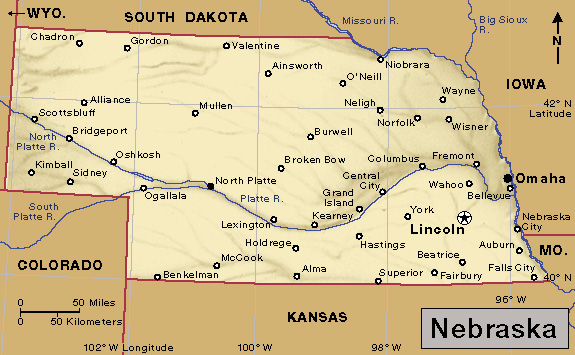
Today, farms and ranches make up over 90 percent of the state’s area. That is a greater percentage than in any other state. In the west, fields of wheat stretch as far as the eye can see. In north-central and western Nebraska, huge herds of beef cattle graze on enormous ranches. On the fertile farms of the east, farmers grow corn, soybeans, grain sorghum, and other crops. The farmers there also raise hogs and fatten cattle for market.
But Nebraska is more than a farming state. Such service industries as finance and insurance play a major role in Nebraska’s economy. Many of the state’s service industries are in the Omaha and Lincoln metropolitan areas. Omaha is the largest city in the state. Lincoln is Nebraska’s capital and its second largest city.
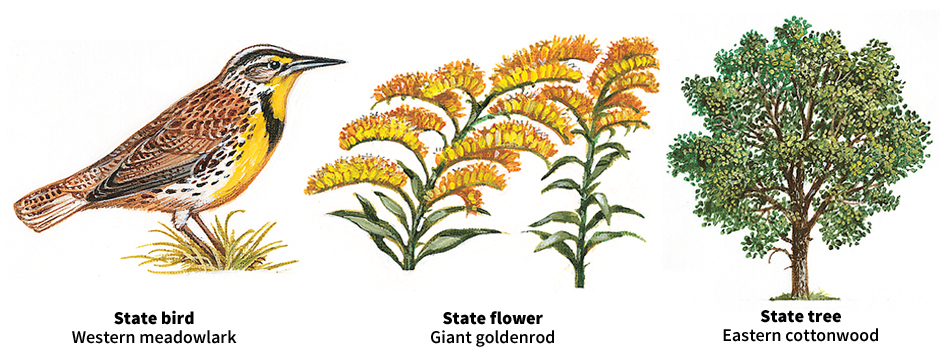
Manufacturing, especially food processing, is also important to the state’s economy. Omaha is a leading food-processing center. A number of other cities in the state have large meat-packing plants.
Much of the history of Nebraska is the story of the tough, strong-willed Nebraska farmer. Many of the first farm settlers were called “sodbusters.” They cut sod into blocks and used the blocks to build their homes. They built with sod because they found few trees on this grassy land. In the 1860’s, the first great wave of homesteaders poured into Nebraska to claim free land granted by the federal government. However, hard times, insect pests, and droughts discouraged many farmers. Many of them returned to the East or moved to the mining areas of Colorado and California. But another wave of farmers poured into the state in the 1880’s.
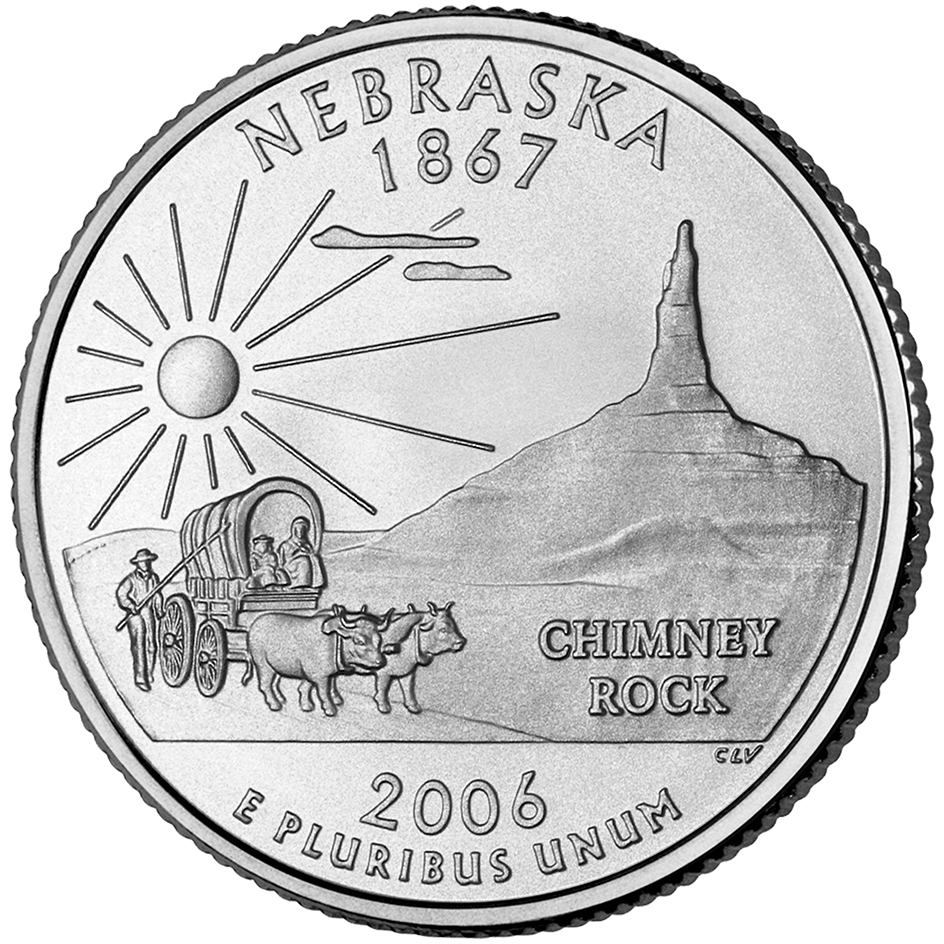
The independent, pioneer spirit of the people of Nebraska led them to adopt a unicameral (one-house) state legislature. The Legislature met for the first time in 1937. Nebraska is the only state in the nation with a unicameral legislature.
The name Nebraska comes from the Oto word nebrathka. The word means flat water. It was the Native American name for Nebraska’s chief river, the Platte. Nebraska’s official nickname is the Cornhusker State. This nickname comes from corn, the state’s leading crop. It also comes from the cornhusking contests that were once held each fall in many rural communities.
People
Population.
The 2020 United States census reported that Nebraska had 1,961,504 people. The population had increased 7 percent over the 2000 figure, 1,826,341. According to the 2020 census, Nebraska ranks 37th in population among the 50 states. About 65 percent of Nebraska’s population lives in the state’s metropolitan areas. The metropolitan areas are Grand Island; Lincoln; Omaha; and Sioux City, Iowa (see Metropolitan area).
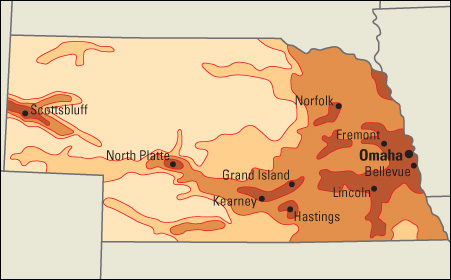
Omaha, the state’s largest city, is a leading food-processing center. Omaha is a trade center for eastern Nebraska and western Iowa. It is also an insurance, telemarketing, and health care center. Lincoln, the state’s second largest city, is an educational, governmental, and retail shopping center. Bellevue, the state’s third largest city, shares its southern edge with Offutt Air Force Base. Grand Island is Nebraska’s fourth largest city. It serves as an important manufacturing, food processing, and distribution center. Only 12 other Nebraska cities have more than 10,000 people. 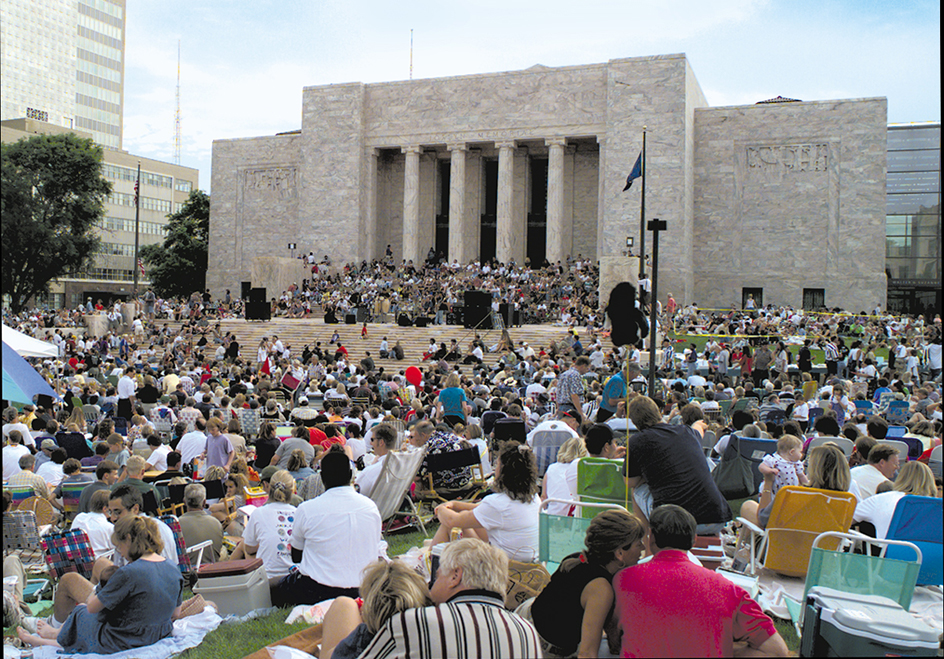
During the early history of Nebraska, Germans were the main immigrant group. They accounted for about 15 percent of the state’s population in 1900. Today, Nebraska’s largest population groups include people of Czech, English, German, Irish, Mexican, and Swedish descent.
Schools.
In the 1820’s, the U.S. Army established Nebraska’s first school, at Fort Atkinson (near present-day Fort Calhoun). During the 1830’s and 1840’s, missionaries of various religious faiths founded schools in eastern Nebraska to teach Indigenous (native) children. The first Legislature of the Nebraska Territory adopted a free-school law in 1855. The state Constitution, adopted in 1875, provides for the present system of public education. Children must attend school from age 6 through 17.
The Department of Education supervises and administers the state’s school system. The department consists of a State Board of Education and a state commissioner of education. The people elect the eight members of the State Board of Education to four-year terms. The members of the board appoint the commissioner. For the number of students and teachers in Nebraska, see Education (table: U.S. students, teachers, and school expenditures).
Libraries.
Nebraska’s first library was established in 1820 at the Fort Atkinson military post. The Kansas-Nebraska Act of 1854 provided for a territorial library in Nebraska. This library later became the state law library.
In 1871, Omaha established the state’s first public library. The Legislature passed a law in 1877 providing state funds to support public libraries. The Nebraska Library Commission was set up in 1901. It promotes, develops, and coordinates library services in the state. Nebraska has public libraries throughout the state.
The library system at the University of Nebraska-Lincoln houses special collections on American folklore and author Willa Cather. The Nebraska State Historical Society Library in Lincoln collects books and documents on the history of the region. Some other significant libraries include the Lincoln City Libraries in Lincoln, and the Creighton University and University of Nebraska libraries in Omaha.
Museums.
The Joslyn Art Museum in Omaha has collections that range from ancient to modern art. Among its displays are objects crafted by Native Americans and examples of art from Western frontier days. The University of Nebraska’s Sheldon Museum of Art in Lincoln displays modern American paintings and sculptures.
The University of Nebraska State Museum in Lincoln has one of the largest collections of mammal fossils in the United States. Its exhibits include a mammoth skeleton and elephant skeletons from different periods. History Nebraska, the state’s historical society, maintains a Nebraska History Museum in Lincoln. History Nebraska also operates various other museums and sites. These include the Fort Robinson Museum in Crawford, the Senator George Norris State Historic Site in McCook, and the John G. Neihardt State Historic Site in Bancroft. The Strategic Air Command and Aerospace Museum near Ashland has galleries of preserved aircraft.
Visitor’s guide
Every year, thousands of tourists drive along Nebraska highways that follow the historic Oregon and Mormon trails. Ruts left by the pioneers’ covered wagons can still be seen along the roadsides. In northwestern Nebraska, the forests and rugged rocks of the Pine Ridge are a paradise for campers, bicyclists, and hikers. Other scenic spots include the valleys of the Platte, Niobrara, Big Blue, Loup, and Republican rivers. The bluffs along the Missouri River provide spectacular views. The lakes and streams of the Sand Hills area teem with fish. On the prairies, hunters bag pheasants, quail, and other birds as well as deer.
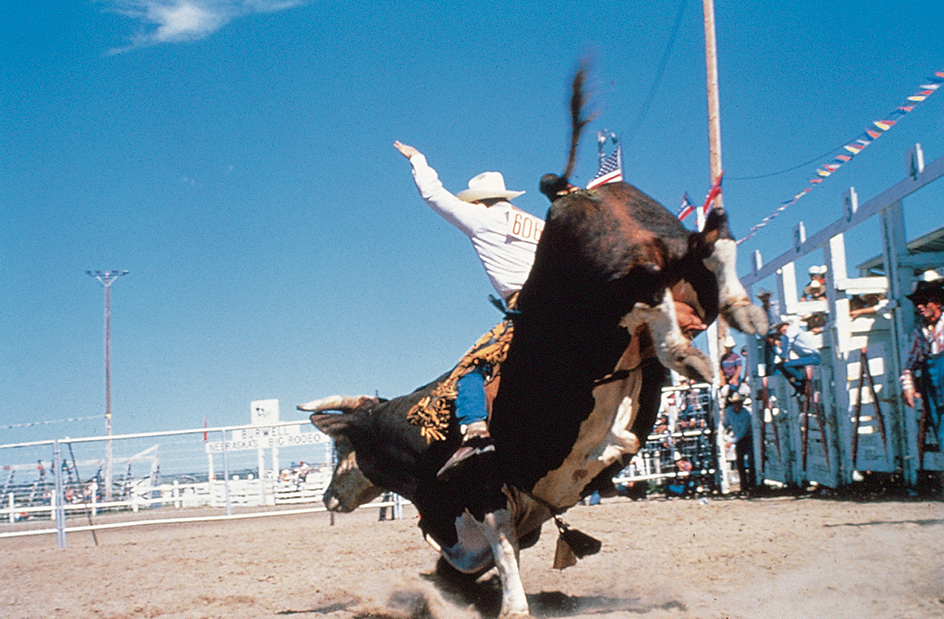
The Nebraska State Fair and Nebraskaland Days are the state’s most important annual events. The fair is held in Grand Island from late August to early September. It features exhibits of crops, farm machinery, household equipment, and livestock. Nebraskaland Days takes place in North Platte in June. It includes parades, a carnival, and the Buffalo Bill Rodeo. Almost every county has a fair during the summer. Many communities hold annual fall festivals. 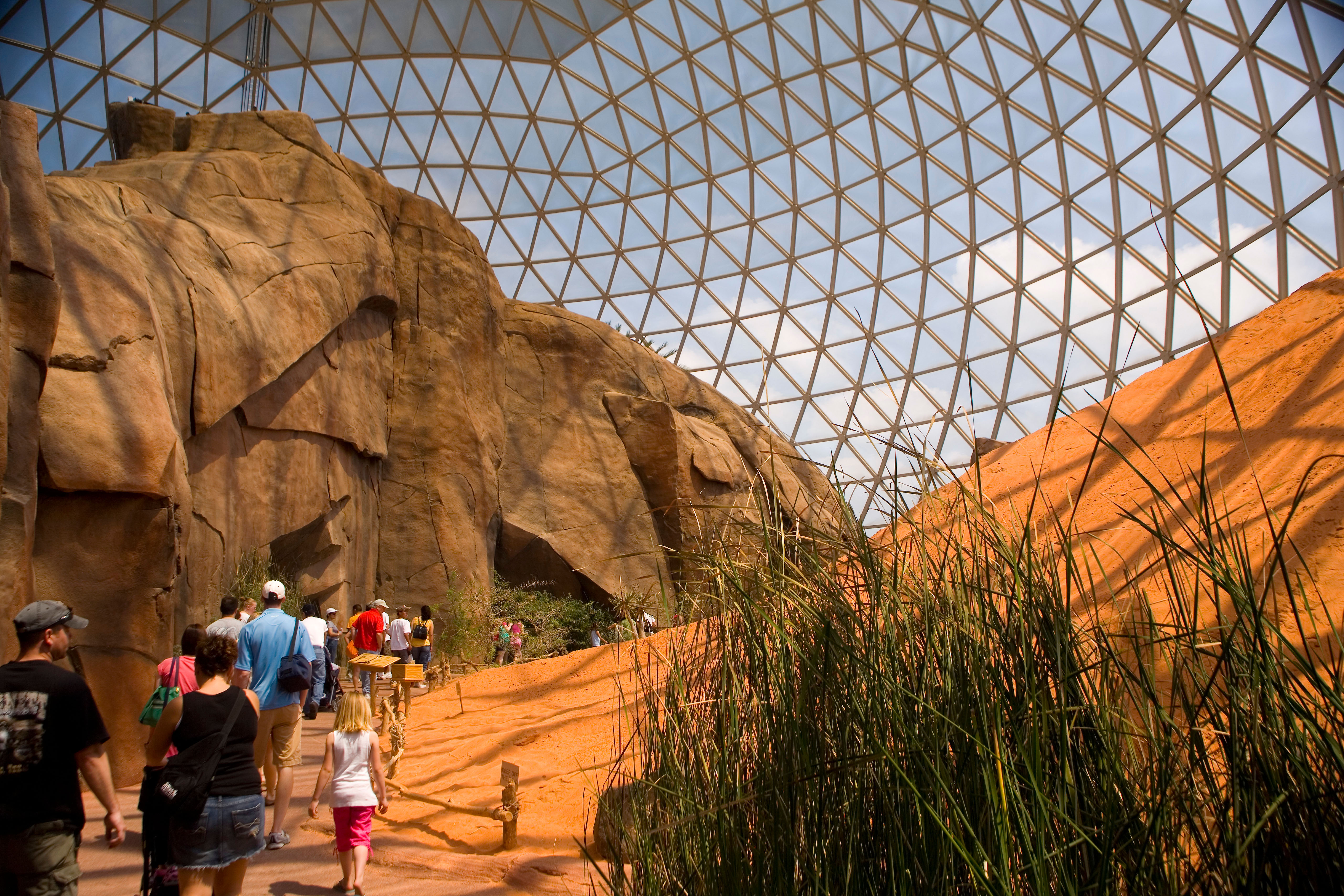
Land and climate
Land regions.
Nebraska rises in a series of rolling plateaus from the southeast to the extreme southwest. The land rises from about 800 feet (240 meters) above sea level to over 5,400 feet (1,650 meters). Nebraska has two major land regions. These are, from east to west, the Dissected Till Plains and the Great Plains.
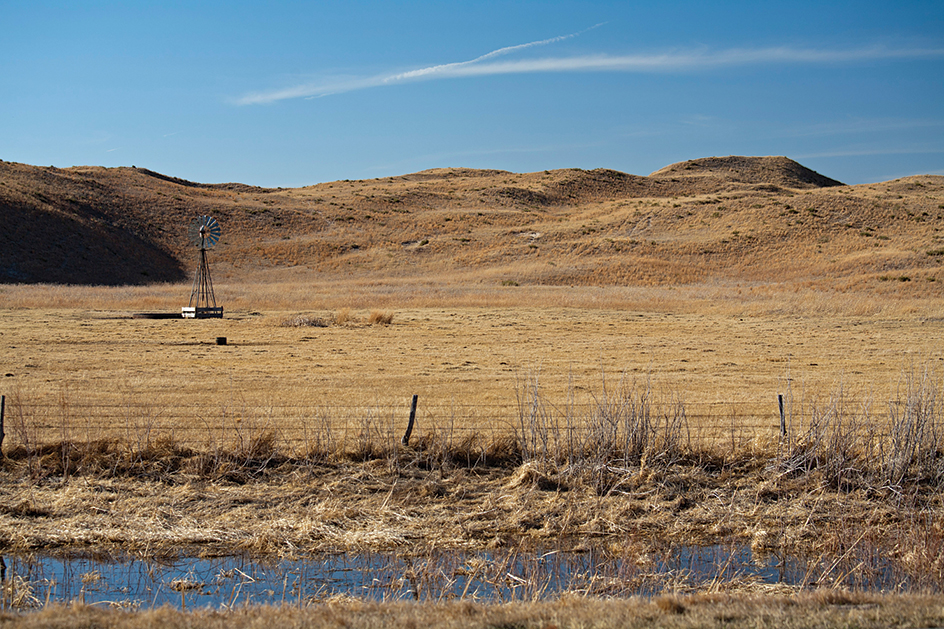
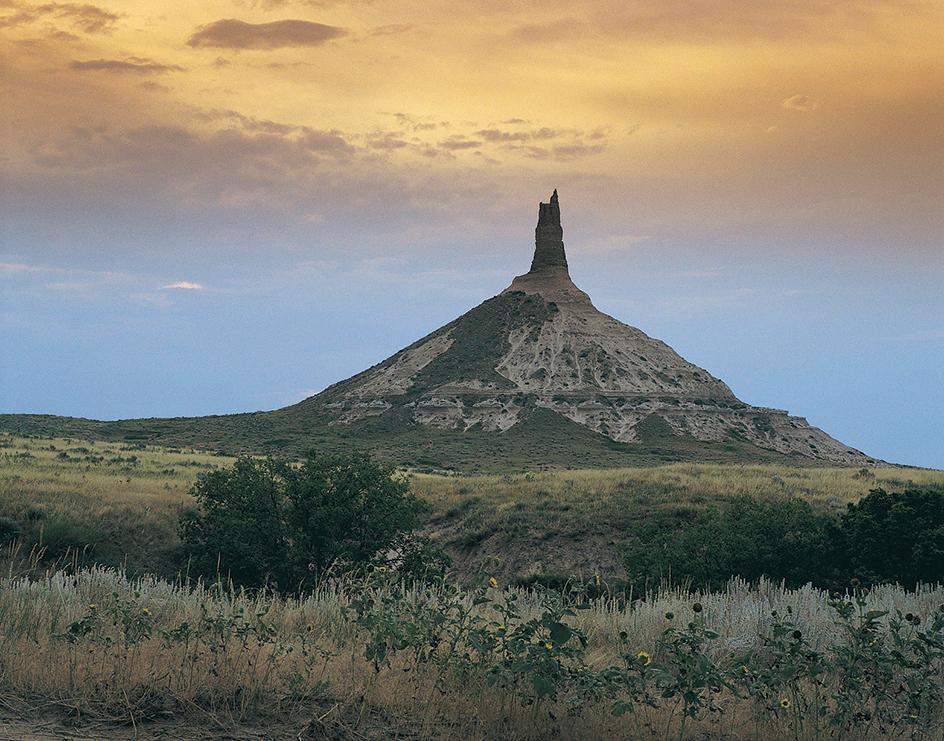
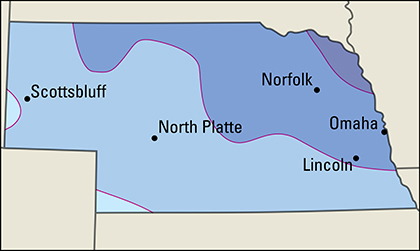
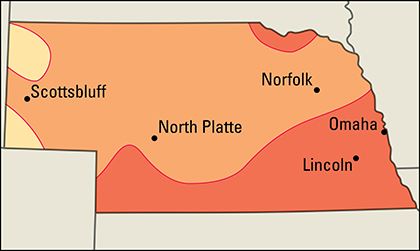
The Dissected Till Plains
cover about the eastern fifth of Nebraska. The Till Plains extend into South Dakota, Iowa, Missouri, and Kansas. Glaciers once covered the Till Plains. The last glacier melted several hundred thousand years ago. It left a thick cover of rich, soil-forming material called till. A deep deposit of windblown dust called loess then settled on the till. Streams have dissected (cut up) the region, giving it a rolling surface. In the southeastern section of Nebraska’s Till Plains, the action of the streams has exposed glacial materials on the sides of the valleys. The northern section is known as the Loess Hills. Most of the Dissected Till Plains region is well suited to farming with modern machinery.
The Great Plains
region of Nebraska stretches westward from the Dissected Till Plains. It extends into Wyoming and Colorado. A series of sand hills rises north of the Platte River in the central part of the region. The soil of the Sand Hills section consists of fine sand piled up by the wind. The sand was formed into hills and ridges. The section covers about 20,000 square miles (51,800 square kilometers). It ranks as the largest area of sand dunes in North America. Grasses that now cover the Sand Hills hold most of the sand in place. Sometimes, however, overgrazing by cattle and extension of irrigated cropland kill the grass cover. The wind then cuts great holes called blowouts into the hillsides. Most ranchers take care not to overgraze the land. The Sand Hills make fine cattle country because of the area’s flowing streams, abundant well water, and excellent grasses. Some of the grass is cut as wild hay.
The soil of the Sand Hills acts like a giant sponge. It absorbs and holds most of the area’s limited rainfall. The rainfall seeps down and creates vast underground reservoirs of ground water. Movement of the ground water makes it possible to pump irrigation water to the surface in areas around the Sand Hills.
A deep deposit of loess covers the central and south-central parts of the Great Plains. Some of this loess country is rough and hilly. But the southeast has a relatively flat loess area. This area, called the Loess Plain, covers about 7,000 square miles (18,000 square kilometers). It is farmed even more intensively than the Till Plains.
North and west of the Sand Hills are the High Plains. They cover about 12,000 square miles (31,100 square kilometers). The High Plains in the west rise to more than 1 mile (1.6 kilometers) above sea level along part of the Wyoming border. The High Plains receive less than 20 inches (51 centimeters) of rainfall. Farmers there must use irrigation or practice dryland farming. Dryland farming consists of methods that make the most of the limited rainfall (see Dryland farming). Rough parts of the High Plains are used mainly to graze cattle. Some of the rough areas, including the beautiful Wildcat Ridge and Pine Ridge, are covered with evergreen trees. The state’s highest point is 5,426 feet (1,654 meters) above sea level in southwestern Kimball County.
A small area of Badlands is found in northwestern Nebraska. There, the forces of nature have carved weird formations in the sandstone and claylike rocks. The Badlands have little economic importance. However, ranchers use some of the area to graze cattle. Tourists marvel at the magnificent scenery.
Rivers and lakes.
The great Missouri River forms Nebraska’s eastern and northeastern border. Nebraska’s principal river, the Platte, flows into the Missouri at Plattsmouth. The North Platte and South Platte rivers join near the city of North Platte and form the Platte. The North Platte River enters the state from Wyoming. The South Platte enters from Colorado. The Platte River winds across central and southern Nebraska. The Platte is too shallow for navigation. Nebraskans use the waters of the river and its branches for irrigation, recreation, and the production of hydroelectric power. See Platte River.
The Loup and Elkhorn rivers are the Platte’s most important branches. Both rise in the Sand Hills. The abundant supplies of ground water in the Sand Hills keep these rivers flowing the year around. The Loup is formed by the North, Middle, and South Loup rivers.
The Republican River enters southwestern Nebraska from Kansas. It flows near the southern edge of Nebraska for about 200 miles (320 kilometers). Then it turns back into Kansas and empties into the Kansas River. Other branches of the Kansas River in Nebraska include the Big Blue and Little Blue rivers. These three branches of the Kansas River usually flow gently. But heavy rainstorms sometimes cause them to overflow and flood the countryside. This danger has been reduced by flood-control projects and by dams built for irrigation and generating electric power.
The Niobrara River flows into northwestern Nebraska from Wyoming. It winds across the northern part of the state. The river joins the Missouri River in Knox County. This narrow, swift river passes through many scenic spots. It is part of the National Wild and Scenic Rivers System.
Nebraska has more than 2,000 lakes. None of the natural lakes is large. Hundreds of small, shallow lakes dot the Sand Hills. Lake McConaughy, Nebraska’s largest lake, was artificially created. It covers about 55 square miles (142 square kilometers). The lake has a shoreline of 105 miles (169 kilometers). Lake McConaughy was formed on the North Platte River by Kingsley Dam.
Other important artificially created lakes on the Platte River irrigation and power system include Jeffrey and Sutherland reservoirs and Johnson Lake. Additional large artificially created lakes in Nebraska are Lewis and Clark Lake on the Missouri River, Swanson Lake and Harlan County Lake on the Republican River, and Enders Reservoir and Harry Strunk Lake on branches of the Republican River.
Plant and animal life.
Forests cover only about 2 percent of Nebraska. Common trees in eastern and central Nebraska include ashes, basswoods, boxelders, cottonwoods, elms, hackberries, locusts, oaks, walnuts, and willows. Pines and cedars are among the trees that grow in the western part of the state.
Tall prairie grasses, especially bluestem, grow in uncultivated parts of eastern Nebraska. Short grasses, such as grama and buffalo grass, cover the land in drier western regions. Eastern shrubs include wild plums and chokecherries. Evening primroses, phloxes, and violets bloom in the eastern regions in spring. During the summer, blue flags, columbines, larkspurs, poppies, spiderworts, and wild roses thrive throughout the state. Goldenrod and sunflowers brighten roadsides and fields in late summer.
Nebraska’s animal life consists chiefly of small animals. They include badgers, coyotes, muskrats, opossums, prairie dogs, rabbits, raccoons, skunks, and squirrels. The state also has mule deer. Mountain lions, absent from the state since the end of the 1800’s, began to be seen again in the 1990’s. Game birds are plentiful. They include ducks, geese, pheasants, and quail. Common fish include bass, carp, catfish, crappies, perch, pike, and trout.
Climate.
Nebraska’s climate ranges from extremely hot in summer to extremely cold in winter. The weather changes suddenly—and sometimes violently. Hot, moist breezes from the Gulf of Mexico occasionally make summer nights uncomfortably warm in eastern areas. Nebraska sometimes has violent thunderstorms, tornadoes, blizzards, and hailstorms. 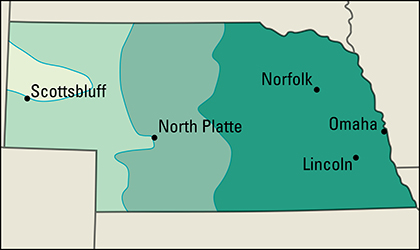
Temperatures vary only moderately from one area to another. Temperatures average about 75 °F (24 °C) in July. They average about 24 °F (–4 °C) in January. The state’s record high temperature of 118 °F (48 °C) was set at Geneva on July 15, 1934; at Hartington on July 17, 1936. The same temperature was reached at Minden on July 24, 1936. The lowest temperature, –47 °F (–44 °C), was recorded at Camp Clarke, near Northport, on Feb. 12, 1899. It was matched at Oshkosh on Dec. 22, 1989.
Rainfall decreases steadily from east to west. The east receives about 29 inches (74 centimeters) of rain yearly. Less than 20 inches (51 centimeters) fall in the west. The state has droughts in some years, floods in others. Most rain falls from April to September. The growing season ranges from about 165 days in the southeast to 120 days in the northwest. Snowfall averages about 30 inches (76 centimeters) yearly in the east. The west generally has less snow.
Economy
Nebraska is one of the leading agricultural states. Farms and ranches take up more than 90 percent of the land. That is a higher percentage than any other state. However, service industries, taken together, make up the largest part of Nebraska’s gross domestic product. Gross domestic product is the total value of goods and services produced within the state in a year. Service industries and manufacturing benefit from the state’s strong agricultural base. For example, processed foods are the state’s leading manufactured product.
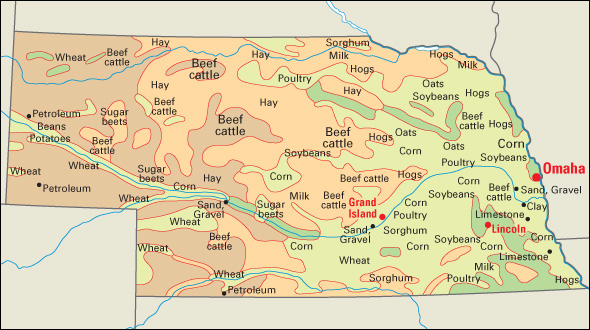
Natural resources.
Soil and water are Nebraska’s most precious natural resources. They are carefully conserved. Farmers rotate their crops. Some practice terracing and other soil-saving methods to keep the soil from wearing out or washing away. Nebraska has built many dams to provide water for livestock and irrigation. The dams also help control the flow of rivers and produce electric power.
Nebraska may have more underground water than any other state. It lies above the High Plains Aquifer, a layer of porous rock and other material filled with water. This huge underground “lake” spreads from Texas to South Dakota. About two-thirds of it lies beneath Nebraska.
Soil.
A fertile silt loam covers eastern Nebraska. The soil of the Sand Hills, in central Nebraska, consists of loose sand. It drifts badly if plowed. But if left untouched, it supports grasses on which cattle can graze. The High Plains in the west have a loamy soil.
Minerals.
Nebraska has few minerals. Fields of petroleum and natural gas lie chiefly in western and south-central Nebraska. Sand and gravel can be found along the Platte and Republican rivers and their branches. Limestone and clay are mined in the southeastern part of the state.
Service industries
account for the largest portion of both the employment and the gross domestic product of Nebraska. Most of the state’s service industries are in the Omaha and Lincoln metropolitan areas.
Omaha is a Midwestern financial center. Mutual of Omaha is headquartered in the city. The company ranks as one of the largest insurance companies in the United States. Omaha is also the home of Berkshire Hathaway, a large holding company of insurance companies and other businesses. Union Pacific, the nation’s largest railroad company, is also based in the city. Many hotels, restaurants, and retail trade establishments operate in the Omaha and Lincoln areas.
Lincoln, the state capital, is the center of government activities. Government services also include the operation of electric utilities and military bases. Nebraska is the only state in which publicly owned utilities provide all electric service. The headquarters of the U.S. Strategic Command (USSTRATCOM) is at Offutt Air Force Base, next to Bellevue. USSTRATCOM is the control center for U.S. nuclear offensive forces and military space operations. It also controls defense against nuclear and long-range conventional missile attacks on the United States. 
Manufacturing.
Food processing is by far the leading manufacturing activity in Nebraska. Meat products and grain products provide most of the income from food processing in Nebraska. Large meat-packing plants operate in the eastern and south-central areas. The state is one of the country’s major centers of meat packing. The Omaha area is the state’s chief center for the processing of grain products. Breakfast cereal and livestock feed are important grain products. 

Chemicals and machinery are also important manufactured products. Pharmaceuticals (medicinal drugs) are a leading chemical product in Nebraska. They are chiefly produced in Lincoln and Omaha. Plants in the Omaha area manufacture farm equipment. Farm equipment is the state’s most important kind of machinery. Fabricated metal products, medical equipment, and transportation equipment are primarily produced in the south-central part of the state and in the Lincoln-Omaha area.
Agriculture.
Farms and ranches cover more than 90 percent of Nebraska’s land area. Nebraska’s leading farm products include beef cattle, corn, and soybeans. Nebraska ranks among the leading producers of all these products. The state has many irrigated farms, especially in the central region.
Livestock and livestock products provide about half of Nebraska’s farm income. Beef cattle are the most important farm product in the state. The rich grasses on the Sand Hills and in the west provide fine feed for range beef cattle. Some farmers raise dairy cattle. Milk is another important source of farm income. 
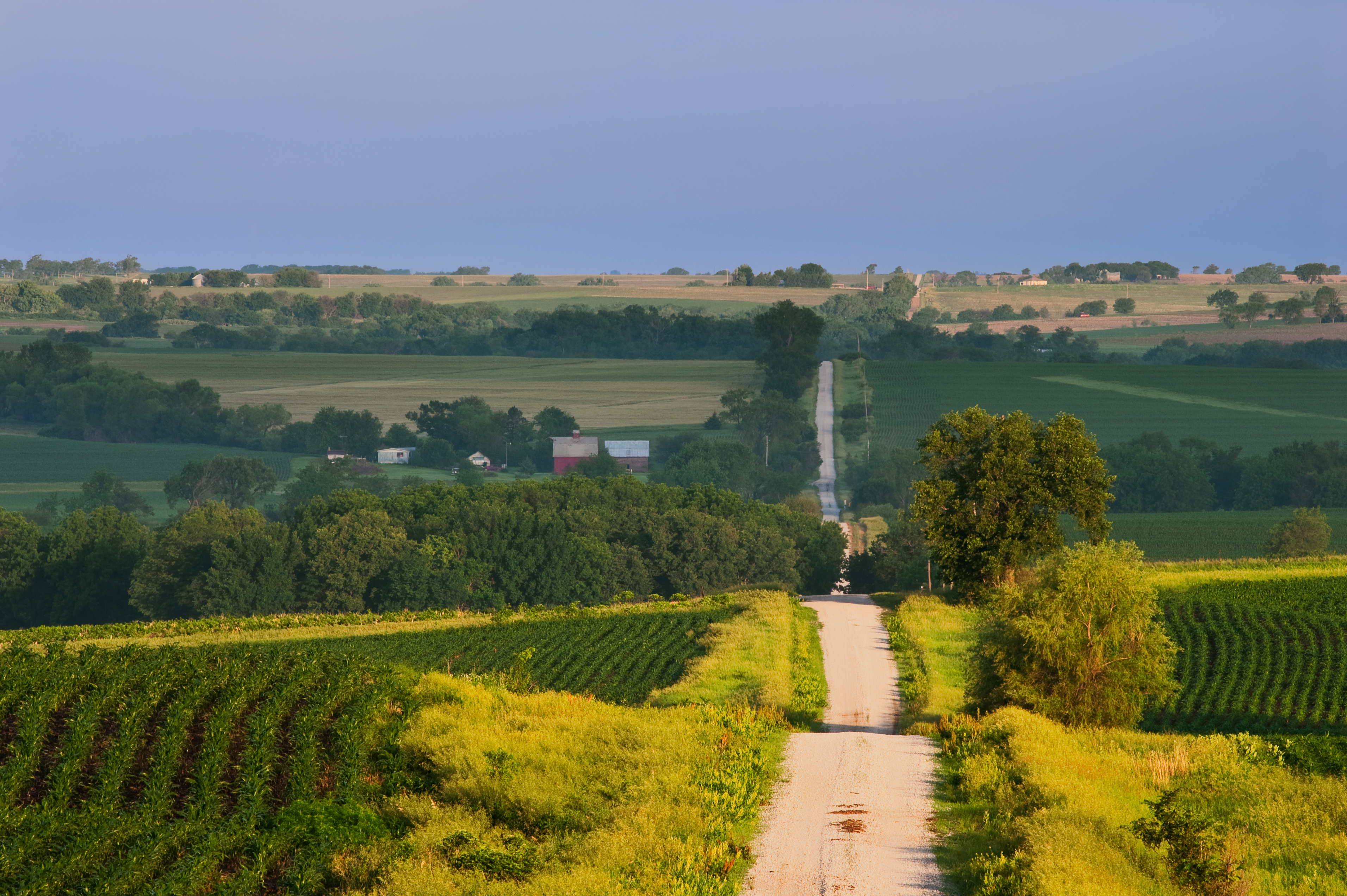
Hogs are the second most important livestock product in Nebraska. Eastern Nebraska is one of the country’s leading hog-producing areas. Poultry farms are also found in this region.
Crops also provide much of Nebraska’s farm income. Corn is the state’s chief crop. Corn grows in the central and eastern areas. The state’s other leading crops are hay, soybeans, and wheat. Most of the hay is grown in the Great Plains region, especially the northern section. Most of the soybean farms lie in the Till Plains region. Most of Nebraska’s wheat farms lie in the west. Other crops raised in Nebraska include beans, grain sorghum, oats, potatoes, rye, and sugar beets.
Mining.
Petroleum and portland cement are two of Nebraska’s leading mined products. Most of the state’s crude oil is produced in Banner, Cheyenne, Dundy, Hitchcock, Kimball, and Red Willow counties. Portland cement is produced in Cass County. Construction companies use sand and gravel from the Platte Valley. Manufacturers use clay from southeastern Nebraska for bricks, tiles, and pottery. The state’s limestone is used in construction, in making cement, and in treating soil. Chase, Cheyenne, and Deuel counties are the state’s leading producers of natural gas.
Electric power and utilities.
Coal-burning power plants provide about half of the electric power generated in Nebraska. Nuclear plants at Brownville and Fort Calhoun supply much of the state’s power. The majority of the remaining power comes from wind, hydroelectric plants, and plants that burn natural gas.
Transportation.
Thousands of pioneers crossed the Nebraska region on their way to the West. The Oregon, California, and Mormon trails followed Nebraska’s Platte River. In 1865, the Union Pacific Railroad began laying track westward from Omaha. The track became part of the first transcontinental rail system in the United States. Today, the Union Pacific and Burlington Northern Santa Fe railroads provide most of the freight service in Nebraska.
Nebraska has an extensive system of roads and highways. Interstate 80 is the most important highway. It runs east and west between Omaha and the Wyoming border. Nebraska’s busiest airport is at Omaha. Lincoln also has a large airport. Ports in Nebraska City, Omaha, and South Sioux City send and receive freight by water.
Communication.
D. E. Reed began Nebraska’s first newspaper in 1854. It was called the Nebraska Palladium and Platte Valley Advocate.. Today, Nebraska’s leading daily newspaper is the Omaha World-Herald. Other Nebraska newspapers with large circulations include The Grand Island Independent, the Lincoln Journal Star, and the Norfolk Daily News.
Government
Constitution
of Nebraska was adopted in 1875. Nebraska had one earlier constitution, adopted in 1866. Amendments may be proposed by the Legislature, by a constitutional convention, or by the people. An amendment proposed in the Legislature becomes law after approval by three-fifths of the Legislature. It also needs approval by a majority of voters casting ballots on the amendment. These approving votes must be no less than 35 percent of the total votes cast in the election.
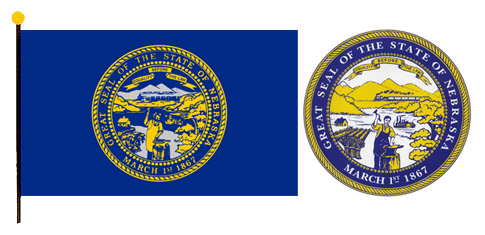
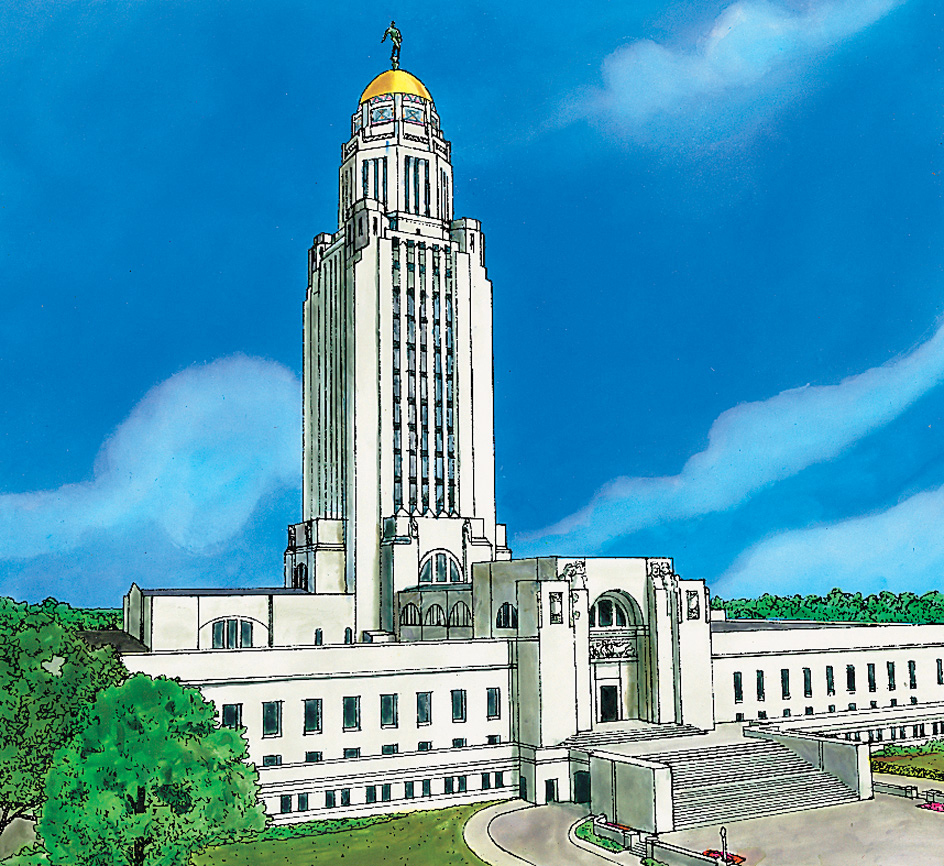
A proposal to call a constitutional convention must be approved by three-fifths of the Legislature. It also must be approved by a majority of voters casting ballots on the proposal. These approving votes must be no less than 35 percent of the total votes cast in the election. Convention proposals become law after they have been approved by a majority of people voting on them. The people of Nebraska may sign a petition (formal request) proposing a constitutional amendment. The number of signatures on a petition must equal at least 10 percent of the number of registered voters in the state. The proposed amendment becomes law after approval by a majority of voters casting ballots on the amendment. But these votes must amount to no less than 35 percent of the total votes cast in the election. The people also have the power of referendum (direct vote). A referendum may be invoked, by petition, to repeal acts of the Legislature.
Executive.
Voters elect the governor and lieutenant governor to four-year terms. Voters also elect the secretary of state, attorney general, treasurer, and auditor. The governor and treasurer may serve no more than two terms in succession. The other four officials have no term limits.
Legislature.
Nebraska is the only state with a unicameral (one-house) legislature. The 49 members of the Legislature are called senators. Voters in each of the state’s 49 legislative districts elect one senator. The people elect the senators on a nonpartisan ballot. That means that the ballot has no political party labels. Nebraska is the only state that chooses state legislators in nonpartisan elections. Senators are elected to four-year terms. 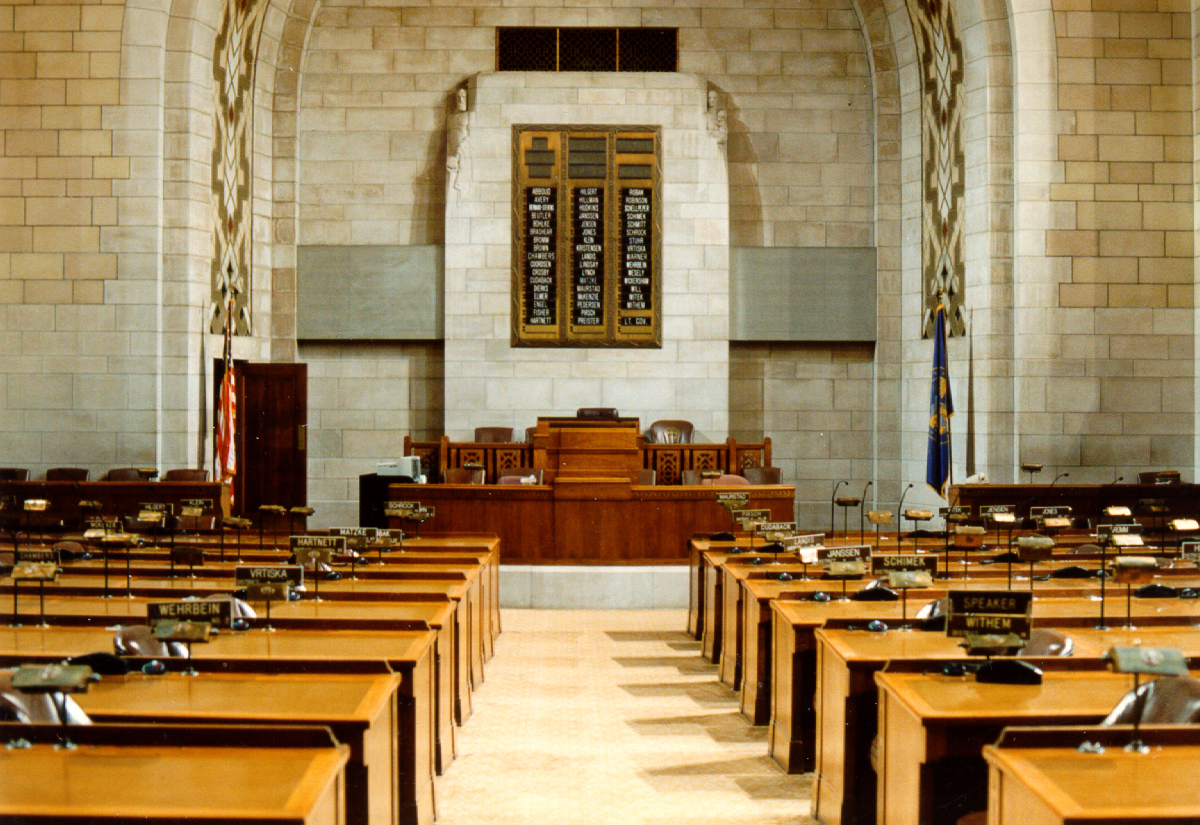
The people approved a constitutional amendment in 1962 increasing the legislators’ terms from two years to four years. In the 1964 general election, 24 senators were elected to two-year terms and 25 senators were elected to four-year terms. Since the 1966 election, half the senators have been elected every two years to four-year terms.
The Legislature meets every year. Regular sessions begin on the Wednesday after the first Monday in January. They are limited to 60 days in even-numbered years and 90 days in odd-numbered years. The governor or the legislature may call special sessions.
Courts
in Nebraska are headed by the state Supreme Court. It consists of a chief justice and one judge from each of the six judicial districts. The Court of Appeals has six judges. Each represents one of the six judicial districts. Nebraska also has 12 district courts, with a total of about 55 judges.
The state follows a merit plan for the selection of Supreme Court, appellate court, and district court judges. Under the plan, the governor appoints a judge to fill a vacancy from a list submitted by a nominating committee. Each judge appointed must be approved by the voters at the next general election after holding office for three years. If approved, he or she serves in the office for six more years. Thereafter, the voters must approve the judge every six years.
There are 12 districts in Nebraska’s county court system and 58 county judges. The state’s three most populated counties—Douglas, Lancaster, and Sarpy—have separate juvenile courts. Juvenile court judges are selected and retained in the same manner as are the Supreme Court and district court judges. No political party labels are allowed on the ballot for judges.
Local government.
Nebraska has 93 counties. About two-thirds of the counties have the commissioner-precinct form of government. These counties are governed by an elected board of commissioners. The remaining counties have the supervisor-township form. These counties are governed by an elected board of supervisors. Other officials in both kinds of Nebraska counties include the county clerk, treasurer, sheriff, and attorney. Commissioners, supervisors, and all other elected county officials may serve any number of terms.
Nebraska has over 500 cities and villages. Most cities have the mayor-council form of government. Nebraska City uses the commission form. A few cities use the council-manager plan. Most villages are governed by a board of trustees. The Constitution gives home rule to cities with over 5,000 people. Such cities may operate under their own charters. Only Lincoln and Omaha have chosen to adopt their own charters.
Revenue.
Taxes provide about half of the state government’s general revenue (income). Most of the rest comes from federal grants and other U.S. government programs. The largest sources of state tax revenue are a general sales tax and a personal income tax. Other important tax revenue sources include taxes on corporate income, motor fuels, motor vehicle licenses, and tobacco products.
Politics.
All members of the Legislature, all judges and school officials, and many local officials are elected or approved on nonpartisan ballots. This system has weakened party politics in the state. However, in most of the elections for governor, the winner has been a Republican. In most presidential elections, the state’s electoral votes have gone to the Republican candidate. For Nebraska’s electoral votes and voting record in presidential elections, see Electoral College.
Two of Nebraska’s most famous citizens were political reformers. William Jennings Bryan ran for president unsuccessfully three times and served as secretary of state under President Woodrow Wilson. George W. Norris won fame as an independent politician during his 40 years in the United States House of Representatives and the United States Senate.
History
Early days.
A prehistoric people probably lived in the Nebraska region between 10,000 and 25,000 years ago. Scientists base this belief on the discovery of tips of stone tools and weapons. The tools and weapons were found buried in the Nebraska earth.
During the 1700’s, European explorers came in contact with several Indigenous tribes in the Nebraska region. At the time, Indigenous people were commonly called Indians. These tribes include the Missouri, Omaha, Oto, and Ponca. The people lived by farming, hunting, and fishing along the rivers. The Pawnee hunted buffalo. They also grew corn, beans, and squash. They fought fiercely with other tribes. Their chief enemies were the Lakota Sioux who lived to the north and the Comanche to the south. But the Pawnee were friendly with white settlers. Pawnee scouts helped the U.S. Army in wars against the Lakota and Cheyenne. The Arapaho, Cheyenne, Comanche, and Lakota hunted in western Nebraska. They moved from place to place in search of game. To keep their hunting lands, some Arapaho, Cheyenne, and Lakota resisted the white settlers.
Other tribes moved into the Nebraska region as white settlers drove them from their homes in the East. Among the last Indigenous groups to settle in Nebraska were the Winnebago and the Santee, or Dakota, Sioux. The Winnebago originally lived in Wisconsin. White people drove the Winnebago first to Iowa and then to Minnesota and South Dakota. In 1863 and 1864, the Winnebago fled into what later became Thurston County. The Santee were forced from Minnesota in 1863. Some were moved to South Dakota and, in 1866, from there to northern Nebraska. The Omaha, Winnebago, and Santee now live on reservations in the state.
The Pawnee, Oto, and Missouri tribes were forced from Nebraska in the 1870’s and 1880’s. They migrated to what is now Oklahoma. In 1876, the Ponca also were ordered to leave Nebraska. But Ponca leader Standing Bear led some of them back to the state in 1879.
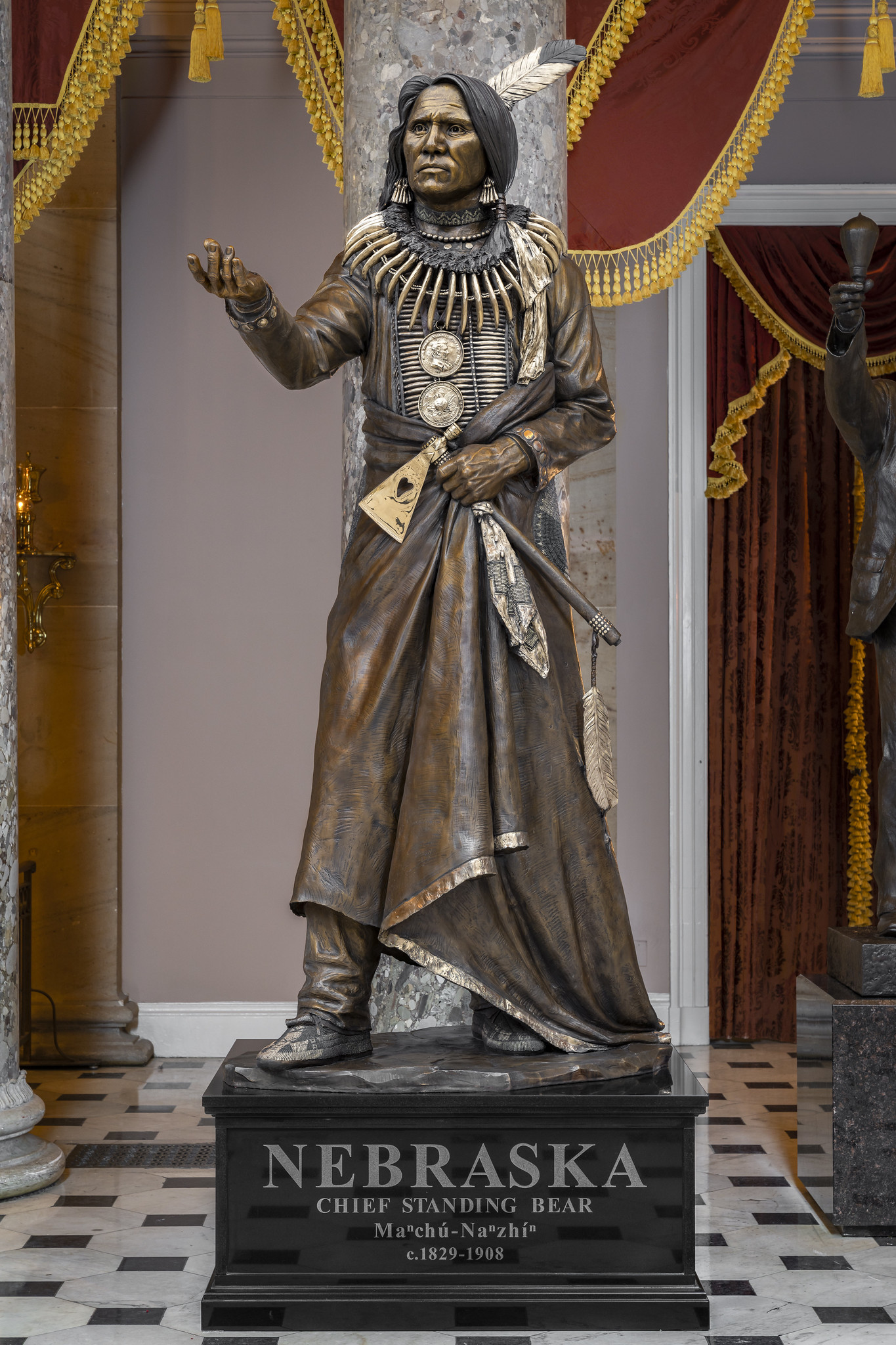
Exploration.
In 1541, Francisco Vásquez de Coronado, a Spanish explorer, led an expedition across the American Southwest and into present-day Kansas. Spain claimed all this territory, including Nebraska. But the Spaniards established no settlements.
In 1682, the French explorer René-Robert Cavelier, Sieur de La Salle, traveled down the Mississippi River to its mouth. He claimed for France all the land drained by the Mississippi and its branches. La Salle named this vast territory, which included Nebraska, Louisiana. He named the area for the French king, Louis XIV. French traders and trappers moved into the Louisiana region during the 1690’s and early 1700’s. In 1714, a French explorer and adventurer, Étienne Veniard de Bourgmont, traveled up the Missouri River to the mouth of the Platte River.
Spain objected to French explorers in regions that it claimed. The Spanish decided to remove the French. In 1720, a Spanish expedition under Pedro de Villasur marched from Santa Fe into the Nebraska region. But the expedition met a group of Pawnee along the Platte River and withdrew after being badly defeated.
Two French explorers, the brothers Pierre and Paul Mallet, traveled from French forts in Illinois to Santa Fe in 1739. They were probably the first Europeans to cross what is now the state of Nebraska.
The Louisiana Purchase.
In 1762, France gave Louisiana to Spain. But French fur traders and trappers continued to operate in the Nebraska region. The Spaniards never set up an effective government. In 1800, Napoleon Bonaparte, the ruler of France, forced Spain to return Louisiana to France. In 1803, he sold the Louisiana Territory to the United States. Nebraska, as part of the Louisiana Purchase, became part of the United States.
American exploration and settlement.
In 1804, President Thomas Jefferson sent an expedition under Meriwether Lewis and William Clark to explore the Louisiana Territory. Lewis and Clark traveled up the Missouri River and explored the eastern edge of Nebraska. Another American explorer, Zebulon M. Pike, visited the south-central part of Nebraska in 1806. Manuel Lisa, a Spanish-American trader, established fur-trading posts along the Missouri River between 1807 and 1820. One of these posts was Fort Lisa, about 10 miles (16 kilometers) north of present-day Omaha.
In 1812, Robert Stuart, a fur agent, set out for New York City from the Astoria fur-trading post in Oregon. Stuart and his party spent the winter in Wyoming. They entered Nebraska early in 1813. They traveled along the North Platte and Platte rivers. They reached the Missouri River in April. Settlers moving to Oregon during the next 50 years followed the route explored by Stuart. This route became known as the Oregon Trail.
The U.S. Army established Fort Atkinson in 1819 on the Missouri River, about 16 miles (26 kilometers) north of present-day Omaha. The fort became the site of Nebraska’s first school, library, sawmill, grist mill, and brickyard. The fort was abandoned in 1827.
In 1820, Major Stephen H. Long led an Army expedition across Nebraska through the Platte and North Platte river valleys. Long described the region of western Nebraska as “almost wholly unfit for farming.” He called it the “Great American Desert.”
During the 1820’s, the American Fur Company and other fur companies set up trading posts at Bellevue and other points along the Missouri River. But until 1854, the federal government maintained Nebraska as so-called Indian country. Except for Indian agents, missionaries, and licensed traders, no white families were allowed to settle there. In 1843, hundreds of pioneers began the “Great Migration” to the rich farmlands of Oregon. They followed the Oregon Trail through Nebraska to the West.
Territorial days.
In 1854, the U.S. Congress passed the Kansas-Nebraska Act. The act created the territories of Kansas and Nebraska and opened the region to white settlement. Earlier bills to create the territories had been defeated because Congress could not agree on the slavery question. Southerners in Congress did not want to open the northern plains for settlement because the Missouri Compromise of 1820 prohibited slavery there. The Kansas-Nebraska Act repealed the Missouri Compromise. It allowed the people living in the two territories to decide for themselves whether to permit slavery. Most Nebraskans opposed slavery.
The Nebraska Territory included what is now Nebraska. It also included parts of Montana, North Dakota, South Dakota, Wyoming, and Colorado. President Franklin Pierce appointed Francis Burt of South Carolina as the first territorial governor. Burt died shortly after he took office. The territorial secretary, Thomas B. Cuming, became acting governor. Cuming organized the territorial government. He also took a census so that elections could be held for the Legislature. Nebraska had a population of 2,732 in 1854. By 1863, Congress had created several new territories from the region. The Nebraska Territory was reduced to about the state’s present area.
Many early settlers in the Nebraska Territory built their homes of sod because so few trees grew on the plains. This sod was known as “Nebraska marble.” Pioneers cut out blocks of sod with spades. Then they piled the blocks on top of one another to form walls. Most roofs consisted of sod blocks supported by a mat of branches, brush, and long grasses. 
Statehood.
By 1860, Nebraska’s population had grown to 28,841. In 1862, Congress passed the first Homestead Act. This act granted 160 acres (65 hectares) of free land in the West to settlers. A great rush for land followed. One of the first homesteads was claimed by Daniel Freeman in 1863 near the present city of Beatrice. The 1862 Homestead Act and similar acts brought many thousands of homesteaders to Nebraska. 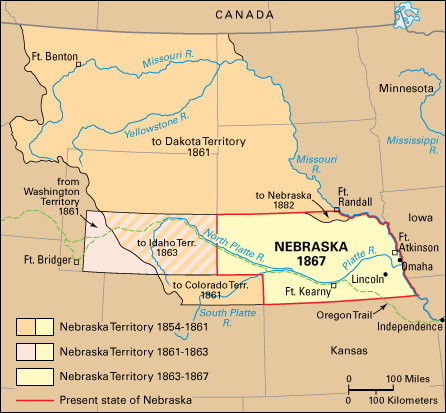
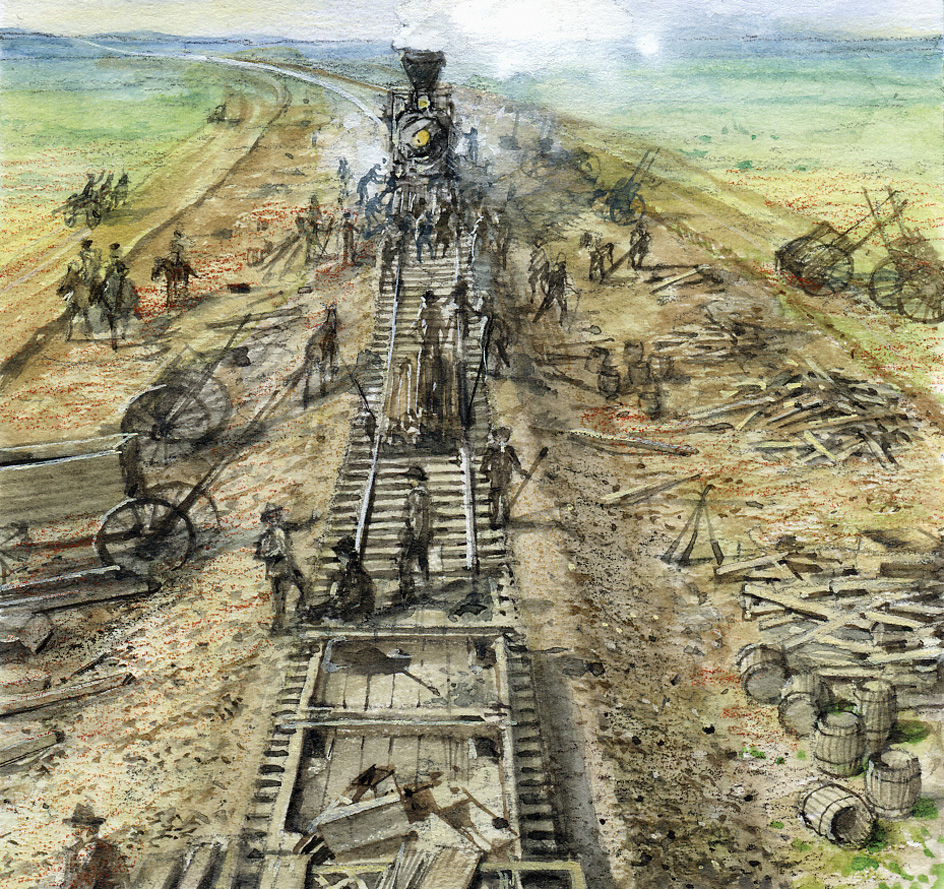
In 1865, the Union Pacific Railroad began building its line west from Omaha. The Union Pacific and the Burlington railroads also started campaigns to bring more settlers to Nebraska. The railroads sent pamphlets to people throughout the East, and even to Europe. The pamphlets described Nebraska as a “Garden of Eden.” These advertisements helped the population increase to 122,993 by 1870.
Early in 1867, Congress passed an act admitting Nebraska into the Union. In doing so, Congress overrode President Andrew Johnson’s veto. Congress had required Nebraska to make certain changes in its Constitution. Johnson believed this action violated the U.S. Constitution. Johnson, a Democrat, also did not want Nebraska admitted into the Union because the territory had a Republican majority. The Republicans in Congress were trying to impeach Johnson. The president believed that two additional Republican senators might have been enough to convict him. Nebraska became the 37th state on March 1, 1867. The people elected David Butler, a Republican, as the first governor.
In 1872, Nebraska became the first state to celebrate Arbor Day. Arbor Day is a special day set aside each year for planting trees. J. Sterling Morton, a newspaper publisher and political leader from Nebraska City, originated the idea of Arbor Day.
Growth of agriculture.
The settlement of Nebraska slowed down between 1874 and 1877, when vast swarms of grasshoppers invaded the farmlands. The grasshoppers damaged oat, barley, wheat, and corn crops. Many settlers left their land and returned East. Farmers in the Midwest saw hundreds of wagons traveling east bearing such signs as “Eaten out by grasshoppers. Going back East to live with wife’s folks.” But another rush of farmers poured into the state during the 1880’s. Prices for land soared. In 1890, land prices collapsed because of drought, overuse of credit, and low prices for farm products. Farmers could not pay for land bought on credit at high prices. 
The farmers blamed the railroads, banks, and other business organizations for their difficulties. Many farmers joined the Populist, or People’s Party. The party sought reforms to help farmers. It achieved its greatest strength in Nebraska during the 1890’s. Many Populists supported William Jennings Bryan. Bryan was a Democrat and the state’s leading political figure of the period.
In the 1890’s, Nebraska farmers started to use irrigation and dryland-farming methods. Congress passed the Reclamation Act in 1902, authorizing federal aid for irrigation development. Three years later, construction started on the North Platte Project. The project irrigated 165,000 acres (66,770 hectares) in western Nebraska. The Kinkaid Act passed in 1904. It provided for 640-acre (259-hectare) homesteads in western Nebraska. But many settlers found much of the land unsuitable for farming. Cattle ranchers bought out most of the homesteaders and returned the land to grass.
Economic depression.
A boom in farm prices ended during the early 1920’s. During the Great Depression of the 1930’s, farm prices fell still further. In addition, drought again hit the state. Many farmers faced bankruptcy and the loss of their land. Banks and insurance companies took over farmers’ property because the farmers could not meet their mortgage payments. But so many families were affected that sheriffs often refused to carry out court orders for public sale of the land. The federal government provided long-term, low-interest loans and other aid to farmers. The loans were part of the New Deal, President Franklin D. Roosevelt’s program to pull the nation out of the Great Depression.
In 1915, a committee of the Nebraska Legislature had recommended a unicameral legislature. The committee believed that a one-house legislature would increase the members’ accountability. It would also eliminate the delays that occur in two-house legislatures. The unicameral legislature would be more economical because there would be fewer members. The committee’s recommendation formed the basis of discussions that lasted almost 20 years. In 1934, U.S. Senator George W. Norris of Nebraska sponsored an amendment to the state Constitution for the adoption of a unicameral legislature. The voters approved the amendment in November 1934. The new unicameral Legislature held its first meeting in 1937.
The mid-1900’s.
Geologists discovered oil in southeastern Nebraska in 1939. Oil companies drilled many wells in the area during the early 1940’s. Oil became the state’s most important mineral.
During World War II (1939-1945), Nebraska farmers produced millions of tons of corn, oats, potatoes, and wheat to help meet wartime food shortages. The raising of beef cattle also expanded. By 1947, Nebraska’s farm income reached more than $1 billion yearly.
In 1944, Congress approved the Missouri River Basin Project (now called the Pick-Sloan Missouri Basin Program). This huge project calls for construction of flood control dams, hydroelectric plants, and reservoirs in Nebraska and other states drained by the Missouri River. Nebraska has already benefited from the project, though it is far from completion.
In 1948, the Offutt Air Force Base near Omaha became headquarters for the U.S. Strategic Air Command. When that command was eliminated in 1992, the base became home to the U.S. Strategic Command (USSTRATCOM). The base has been important to the economy of Omaha.
In 1949, geologists discovered oil fields in western Nebraska. During the 1950’s, Nebraska farms became larger in size but fewer in number. The increased use of machinery lessened the need for farmworkers. Many of these workers moved to towns and cities in search of jobs. By 1970, over 60 percent of Nebraska’s people lived in urban areas.
The shift in population made Nebraska aware of the need to expand its industries and to attract new ones. In 1960, the voters approved an amendment to the state Constitution allowing cities and counties to acquire and develop property for lease to private businesses. Many new firms moved to Nebraska in the 1960’s. The new firms came partly as a result of the state’s campaigns to attract industry. Employment in manufacturing rose 44 percent in the 1960’s.
During the 1960’s, the state Legislature passed much important legislation. It strengthened state government by raising salaries and lengthening terms of government officials. In 1963, it passed the Nebraska Education Television Act. Nebraska became one of the first states to cover its entire area with educational television broadcasts. In 1967, it adopted sales and income taxes to make up for the revenue that was lost when the people voted out the state property tax in 1966.
The late 1900’s.
In 1982, Nebraskans adopted Initiative 300. The initiative was an amendment to the state Constitution that bans corporations from owning farm or ranch land in the state. Initiative 300 was designed to preserve the family farm. But it was criticized for keeping land prices down and slowing the development of corporation-owned feedlots. In 2006, a federal appeals court ruled the initiative unconstitutional.
In 1986, State Treasurer Kay Orr, a Republican, defeated former Lincoln Mayor Helen Boosalis, a Democrat, in the election for governor. It was the first governor’s election in U.S. history in which both major candidates were women. Orr became Nebraska’s first woman governor. She was also the first Republican woman governor of a U.S. state.
In 1990, Nebraska’s government passed a large tax increase to help finance public education. In a referendum, the voters approved the tax increase. At the same time, they rejected a proposal to limit government spending increases to 2 percent a year.
In 1996, the Legislature put a limit on local property-tax-rate increases. As a result, schools faced a reduction in their chief source of income. In 1997, to offset that loss, the Legislature passed a measure providing increased state aid to public schools. The law based financial aid on a statewide average of spending per pupil. Although the formula benefited most schools, many small rural schools with higher than average per-pupil costs received little or no funding. Lawmakers expected the measure to force the smallest school districts to reorganize.
The early 2000’s.
In 2005, Governor Mike Johanns resigned from office to become U.S. secretary of agriculture under President George W. Bush. Johanns had served as Nebraska’s governor since 1999. In 2008, Johanns won election to the U.S. Senate. Also in 2008, Nebraska split its electoral votes in a presidential election for the first time. Nebraska and Maine are the only states in which all the electoral votes do not automatically go to the state’s overall winner. Illinois Senator Barack Obama claimed an electoral vote in Nebraska’s second congressional district—the Omaha area. Arizona Senator John McCain secured the state’s four remaining electoral votes. Obama won the general election.
